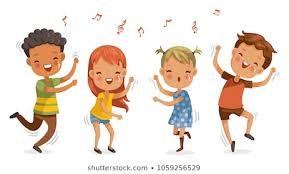
Creative dance allows teachers to introduce new ways pupils can be creative through dance by doing things such as creating their own dance routine or evaluating their routine and establishing what they could do better for next time (Watts et al, 2007). Creative dance is beneficial in education as it increases pupils confidence and their ability to work with others in groups.
My role in creative dance as a student teacher is to ensure that pupils have a safe learning environment where they can build on or increase their creativity in an environment they are comfortable in (Smith, 1996). It is also important to value that each pupils learning process is different from others therefore we should allow them to work on creative dance at their own pace (Smith et al, 2005). As a group we had an opportunity to create a lesson plan for pupils to teach dance in a creative way.

Continuing with creative dance, we had a little refresher of our own dance routines we created in the dance workshops. In groups we came up with our own warm up game and ours was called magic rocks. Magic rocks is a game for pupils to use their imagination and bring it to life (Sharp, 2001). The teacher calls magic rocks and the pupils curl up in a ball on the floor. Then the teacher would say magic rocks become and say elves for example and then the pupils would use their imagination to walk about the room as if they were elves.
We then went on to progressing our routine by adding in a start and end position and also a change of position and levels. This gave a group an opportunity to use our collaboration skills to come up with some new ideas to make our dance come alive! Once each group had completed their changes to their routines we pieced together every groups small section and started working on the dance as a whole.

Within music today, we were also able to test our creativity as individuals. We were looking at tuned percussion such as the glockenspiel. As the lesson went on we were progressing well as were able to complete rhythms for letter notes C through to A which is also known as a Pentatonic Scale.
We then took part in an improvisation task where we were to play notes and rhythms to the song Hit the Road Jack. Improvisation allows pupil to be confident in trying things with no music and they are just making up a rhythm they think works best (Shevock, 2018).
This sort of task would allow teachers to allow pupils to make mistakes and to encourage them to explore their own ways of playing the rhythms. They should also value pupils uniqueness as not everyone’s outcome will be the same (Williams, 2017).
Overall, both music and dance this week have encouraged creativity within teaching of the arts. It is also important as a student teachers we encourage pupils to take the opportunities to be as creative as they can be and always encourage pupils not to be frightened to perform or present their work to others!
REFERENCES
Sharp, C, (2001) Developing Young Children’s Creativity Through the Arts: what does Research Have to Offer. [Online] Available: https://www.nfer.ac.uk/publications/44420/44420.pdf [Accessed: 19th November 2019].
Shefock, D.J. (2018) The Evidence of Confident Music Improvising. Journal of Research Studies in Music Education. [Abstract, Online] Available: https://journals.sagepub.com/doi/10.1177/1321103X17751935 [Accessed: 19th November 2019].
Smith, D.B. Frotz, J. Ito, H. Kohorst, J and Vascimini, E. (2015) Expressive Arts as a Means of Increasing Well-being in Children. [Online] Available: https://scholarworks.com/umt.edu/cgi/viewcontent.cgi?article=1043&content=utpp. [Accessed: 19th November 2019].
Smith, M.K. (1996) Fostering Creativity in the Early Childhood Classroom. Early Childhood Education Journal. [Abstract, Online] Vol.24, pg. 77-82. Available: https://link.springer.com/article/10.1007/BF02353284#citeas [Accessed: 19th November 2019].
Watts, R. Cox, S. McAuliffe, D and Heme, S. (2007) Teaching Art and Design 3-11. (Reaching the Standards). London: Continuum International Publishing.
Williams, M.K. (2017) John Dewey in the 21st Century. Journal of Inquiry and Action in Education. [Online] Vol 9(1), pg. 91-100. Available: https://files.eric.ed.gov/fulltext/EJ1158258.pdf [Accessed: 19th November 2019].
